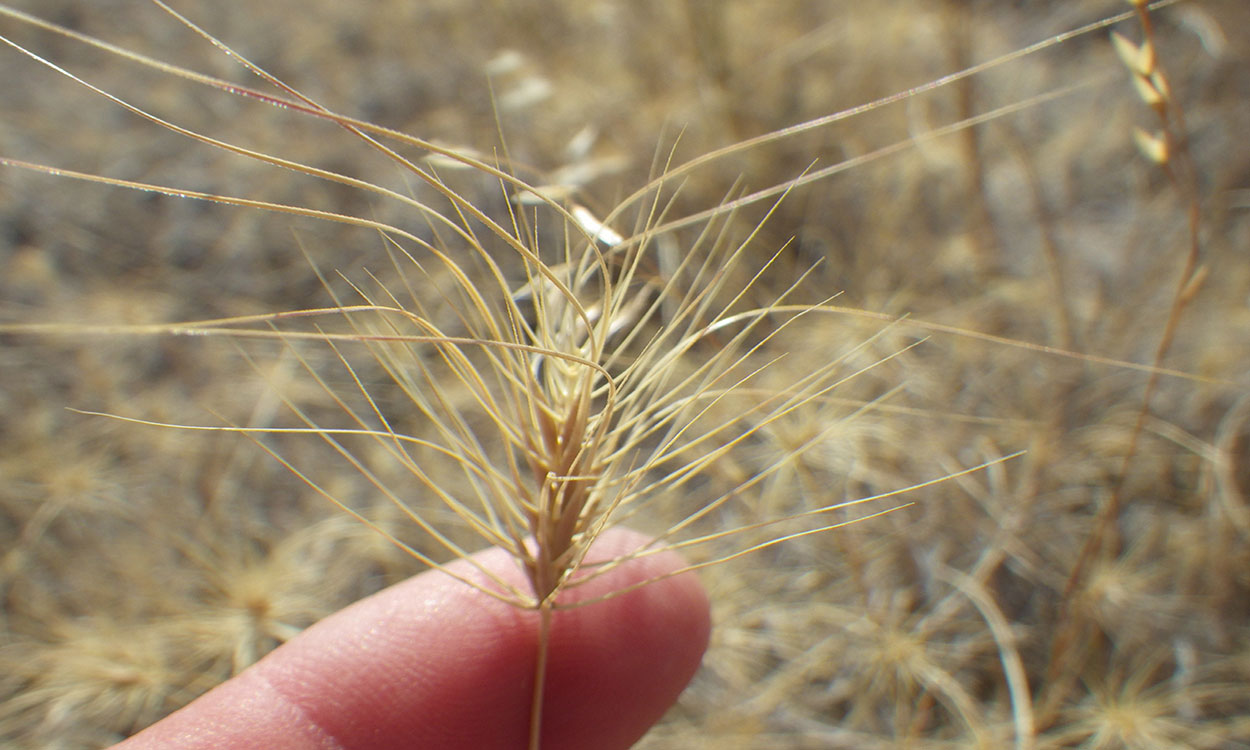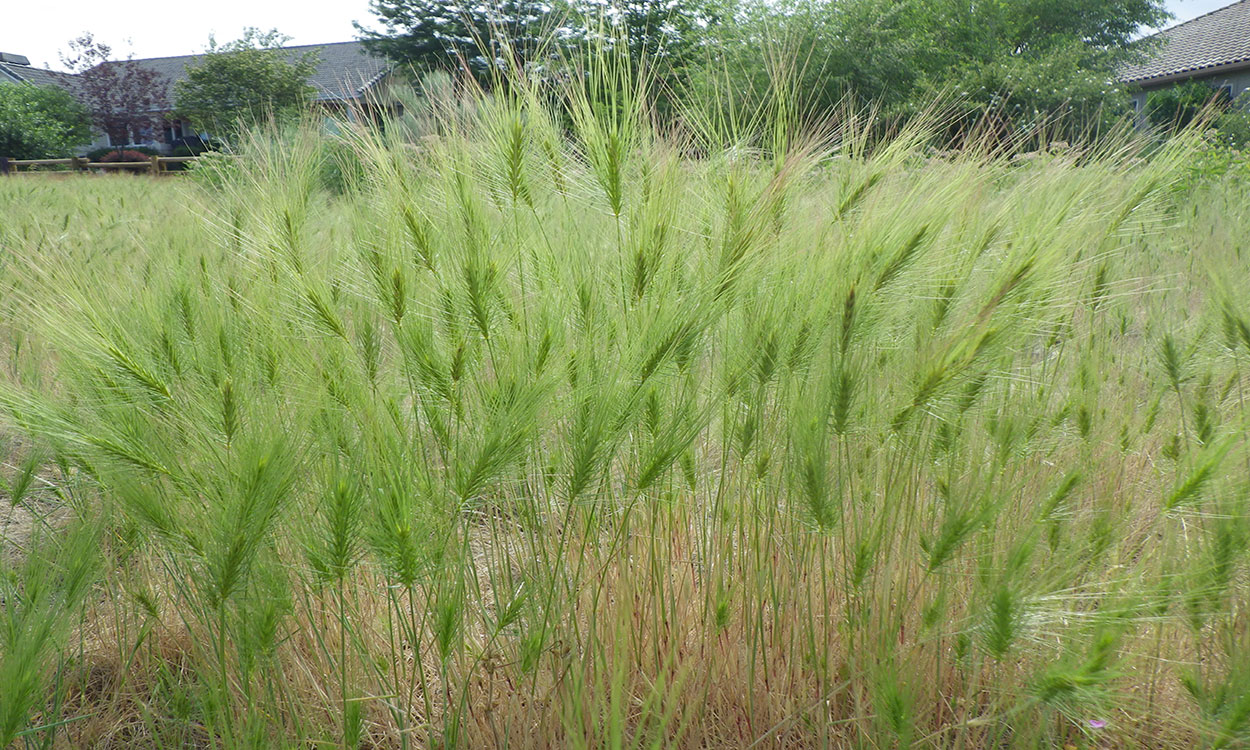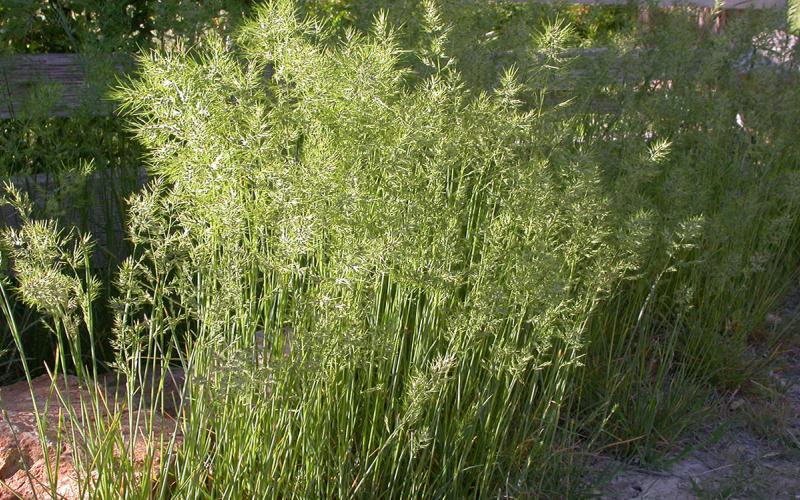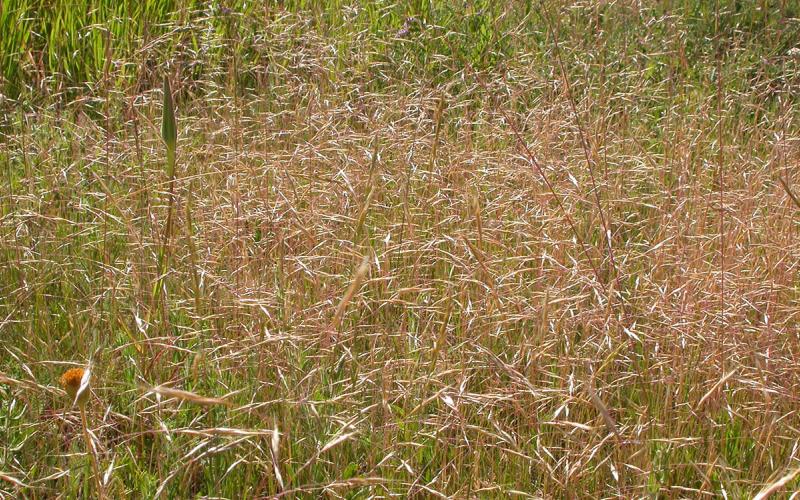Overview
There is an invasive annual grass that should be first and foremost in the front of ranchers’ minds across South Dakota: medusahead (Taeniatherum caput-medusae). Medusahead gets its name from the head of Medusa, the African serpent goddess that represents female wisdom (she has snakes coming out of her head, which mirrors the awns on the plant’s seedhead). Meduashead, like ventenata, has gained notoriety in neighboring states, such as Montana and Wyoming, where both states have it listed on the state noxious weed list. As of the publication date of this article, it has not yet been listed in South Dakota.
Why is it a problem?
Medusahead is very similar to ventenata in that it is a direct threat to rangelands. Like other invasive annual grasses, it can readily outcompete native species (Figure 1). As a winter annual, it emerges in the fall, overwinters as a seedling, and resumes growth in the spring prior to the growth of desired native species, and then matures early in the grazing season.

Forage available to livestock can be reduced by 70% in areas invaded with medusahead! Each seedhead can produce around 20 or more seeds, with seed viability of 2 to 3 years. Like cheatgrass (Bromus tectorum) and ventenata, medusahead also matures early in the season, drying out and serving as fine fuel for wildfires that increase in intensity and frequency. Of note is that medusahead matures 2 to 4 weeks later than other annual grasses. In addition, medusahead has a high silica content, contributing to its lack of palatability for livestock, but that also means that its litter slowly decays; the total ash content of a plant will be around 70 to 90% silica. Further, the awned seeds of medusahead can cause injury to livestock, affecting their eyes, mouths, and noses. Lastly, there are very few upland game birds that use medusahead seeds, and it does not have any importance as wildlife forage.
Medusahead Identification
- 6 to 24 inches tall.
- Slightly hairy.
- Rolled leaf blades.
- Inflorescence (or, the flowering part) has a distinct shape (Figure 2) that mirrors that of look-a-like native grasses, bottlebrush squirreltail and foxtail barley.
- Awns on seeds are very long (30 to 100 millimeters); they protrude upward and outward and stay attached to the seed during dispersal (this is how it gets its name “medusahead”). Note that, while the awns stay attached on medusahead, they do not on the look-a-likes of bottlebrush squirreltail and foxtail barley.
- Color: bright green (early spring) (Figure 3), turning brown at maturity (early summer). Note that this is unlike cheatgrass, which turns red at maturity.


Management
If you notice medusahead on your operation, take note of where it is. Record the location, so you can keep track if it begins to spread. You should report its presence to your county weed board. As with ventenata, medusahead seeds are not viable beyond 2 to 3 years; thus, repeated, direct management strategies can have an impact over time.
- Prevent Seed Spread
Avoid feeding contaminated hay that may come from high-risk areas, or utilize hay that is “certified weed free.” If you are doing a seeding project, use trusted seed sources to ensure that the seed is “clean” and free from contaminants, such as medusahead. If you do drive through an area that is heavily infested with medusahead, clean vehicles, ATVs, and other transports to avoid spreading seed elsewhere on your operation. - Herbicide Application
The University of Wyoming has had success using indaziflam for medusahead control. Recovery of native perennial grasses did occur. Other herbicides, such as imazapic and glyphosate, may also be used. To completely eradicate medusahead, regardless of the herbicide used, multiple applications may be required to shift the plant community. - Grazing
Like other invasive annual grasses, such as cheatgrass and Japanese brome, repeated, early, heavy grazing of medusahead prior to it maturing can negatively impact it over time, resulting in control. - Burning
Burning has been used to control medusahead, as it packs a double punch; it removes the thick thatch/litter layer that is characteristic of medusahead, and it can also decrease the seedbank. Research has demonstrated that a spring burn to remove litter followed by a pre-emergent herbicide application (imazapic) in the fall can effectively manage established populations.
Conclusion
When it comes to medusahead in South Dakota, it is probably not a matter of “if” invasion occurs, but “when.” The greatest way to control medusahead and prevent further spread is to be vigilant and continue to be on the lookout for it.
Additional Resources
- SPECIES: Taeniatherum caput-medusae. U.S. Department of Agriculture.
- Detecting Invasive Species: Medusahead. University of Nebraska-Lincoln.
- Resources. Institute for Managing Annual Grasses Invading Natural Ecosystems.
- Medusahead - Taeniatherum caput-medusae. Montana.gov.
- Watch Out for Medusahead. University of Nebraska-Lincoln.

